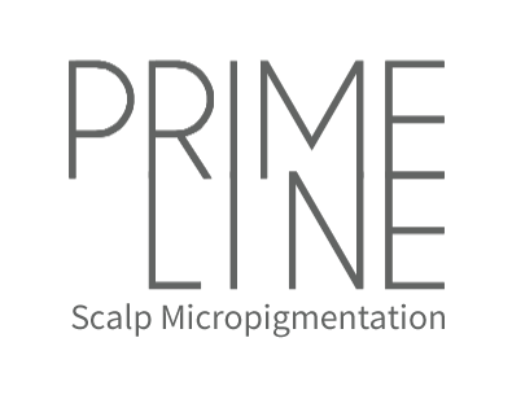
Frequently Asked Questions.
Q: What is 3D Scalp Micropigmentation?
A: 3D Scalp Micropigmentation is a technique that replicates hair follicles for those with balding, hair loss, or scars. Your Prime Line technician, Erin, will use a micro-needle to implant a specialized pigment into the skin. Thousands of these replicated hair follicles grouped together gives the look of natural hair or hair’s previous density.
The process is non-surgical, non-ablative, and non-invasive. Compared to traditional hair loss procedures, the cost of 3D Scalp Micropigmentation is significantly lower.
Q: How is Scalp Micropigmentation different than a regular tattoo?
A: 3D Scalp Micropigmentation might seem like it is just a regular tattoo, but there are some major distinctions. The ink used is a specialized pigment that delivers a natural look because of its lower concentration. 3D Scalp Micropigmentation will utilize a smaller needle compared to a traditional tattoo needle. Also, the pigment will be implanted at a proper dermal depth, or the first layer of the dermis.
The most notable difference, however, is the expertise of your Prime Line technician. Erin has received specific training in 3D Scalp Micropigmentation. Her skilled hand gives clients a blended, natural look, rather than the sometimes stark look a tattoo. Additionally, Erin has more than 10 years experience in cosmetology and will help you achieve your best appearance.
Q: What are the side effects of 3D Scalp Micropigmentation?
A: Side effects are not common. However, clients can experience dryness, itching, or flaking on the scalp during the healing process. 3D Scalp Micropigmentation is a safe and relatively quick procedure that gains significant results.
Q: How long does the procedure take?
A: Usually 3D Scalp Micropigmentation requires three sessions. The first session is approximately 2.5 to 3.5 hours, the second session is 2.5 to 3 hours, and the third session is 2 hours.
Q: Is 3D Scalp Micropigmentation painful?
A: On a scale from 1 to 10, with 1 being the least amount of pain, and 10 being the worst, most clients rank the pain level at 2, 3, or 4. Certain areas such as the sides of the head and frontal lobe tend to be more tender due to a higher concentration of nerve endings. We recommend our clients take extra-strength Tylenol 30 minutes prior to their procedure to help ease discomfort.
Q: What can I expect my results to look like?
A: In addition to extremely natural-looking results, clients usually gain confidence with the appearance of a younger-looking, fuller head of hair.
Immediately following the procedure, the pigment will appear darker than the anticipated result for 24 to 48 hours. Clients also typically have some redness similar to a sunburn. Each treatment will continue to enhance your look, and the ultimate results will develop around 2 weeks after the final treatment.
Q: What is the average time between sessions?
A: Pricing includes 3 treatments. It is recommended that treatments be scheduled 7 to 10 days apart. Sessions can be pushed slightly longer in between depending on the client’s healing progress, scalp sensitivity, and scheduling.
Q: How many hairs are placed in each session?
A: Thousands of replicated hair follicles are placed in each session. The amount is specific to each client and his or her needs.
Q: Can 3D Scalp Micropigmentation hide hair transplant scars, surgical scars, or trama/injury scars?
A: Certainly. Erin has experience in camouflaging or disguising all types of scars on the scalp.
Q: How long does 3D Scalp Micropigmentation last?
A: Most clients can expect to have their 3D Scalp Micropigmentation last for many years. However, the pigment will slowly fade over time. To keep the pigment looking fresh, it is best to come in for a touch up every 2 to 6 years.
Time in the sun, certain medications and skin care products can play a factor in fading. Speak with Erin about proper daily scalp care.
Q: What length do I need to keep my hair cut for SMP?
A: SMP looks best to keep the hair length anywhere from a razor cut to a #1 guard. Everyone is different depending on the client’s preference and how well the pigment blends. The shorter the better for balding hair to blend natural hair and pigment. For thinning hair, the client can wear their hair longer as long as there is not a line of demarcation from the scalp micro pigmentation and the clients natural hair.
